Research Progress on Global Marine Gas Hydrate Resistivity Logging and Electrical Property Experiments
Abstract
:1. Introduction
2. Resistivity Logging Progress of Marine Gas Hydrate
2.1. The South China Sea
2.2. Nankai Trough of Japan
2.3. Ulleung Basin of East Sea
2.4. The Krishna–Godavari(K-G) Basin
2.5. The Blake Ridge
2.6. Gulf of Mexico
2.7. Cascadia Margin
2.8. Brief Discussion
3. Simulation Experimental Study on Electrical Characteristics of Natural Gas Hydrate
3.1. Simulation Experiment on Electrical Characteristics of Gas Hydrate Bearing Sediments
3.2. Gas Hydrate Saturation Evaluation Models Based on Electrical Property
3.3. Brief Discussion
4. Conclusions
Author Contributions
Funding
Institutional Review Board Statement
Informed Consent Statement
Data Availability Statement
Acknowledgments
Conflicts of Interest
References
- Boswell, R.; Hancock, S.; Yamamoto, K.; Collett, T.; Pratap, M.; Lee, S.-R. 6-Natural Gas Hydrates: Status of Potential as an Energy Resource. In Future Energy, 3rd ed.; Letcher, T.M., Ed.; Elsevier: Amsterdam, The Netherlands, 2020; pp. 111–131. [Google Scholar]
- Sloan, E.D. Clathrate Hydrates of Natural Gases, 2nd ed.; Revised and Expanded; CRC Press: Boca Raton, FL, USA, 1998. [Google Scholar]
- Liu, B.; Chen, J.; Pinheiro, L.M.; Yang, L.; Liu, S.; Guan, Y.; Song, H.; Wu, N.; Xu, H.; Yang, R. An insight into shallow gas hydrates in the Dongsha area, South China Sea. Acta Oceanol. Sin. 2021, 40, 136–146. [Google Scholar] [CrossRef]
- Matsumoto, R.; Aoyama, C. Verifying Estimates of the Amount of Methane Carried by a Methane Plume in the Joetsu Basin, Eastern Margin of the Sea of Japan. J. Geogr. Chigaku Zasshi 2020, 129, 141–146. [Google Scholar] [CrossRef] [Green Version]
- Daigle, H.; Cook, A.; Malinverno, A. Formation of massive hydrate deposits in Gulf of Mexico Sand Layers. Fire Ice 2018, 18, 1–3. [Google Scholar]
- Riedel, M.; Collett, T.S.; Shankar, U. Documenting channel features associated with gas hydrates in the Krishna–Godavari Basin, offshore India. Mar. Geol. 2011, 279, 1–11. [Google Scholar] [CrossRef]
- Boswell, R.; Shipp, C.; Reichel, T.; Shelander, D.; Saeki, T.; Frye, M.; Shedd, W.; Collett, T.S.; McConnell, D.R. Prospecting for marine gas hydrate resources. Interpretation 2016, 4, SA13–SA24. [Google Scholar] [CrossRef]
- Collett, T.; Bahk, J.; Baker, R.; Boswell, R.; Divins, D.; Frye, M.; Goldberg, D.; Husebø, J.; Koh, C.; Malone, M.; et al. Methane Hydrates in Nature—Current Knowledge and Challenges. J. Chem. Eng. Data 2015, 60, 319–329. [Google Scholar] [CrossRef]
- Collett, T.S.; Johnson, A.H.; Knapp, C.C.; Boswell, R. Natural gas hydrates—A review. Brows. Collect. 2009, 89, 146–219. [Google Scholar]
- Ye, J.L.; Qin, X.W.; Xie, W.W.; Lu, H.L.; Ma, B.J.; Qiu, H.J.; Liang, J.Q.; Lu, J.A.; Kuang, Z.G.; Lu, C.; et al. Main progress of the second gas hydrate trial production in the South China Sea. Geol. China 2020, 47, 557–568. [Google Scholar]
- Wu, N.; Li, Y.; Wan, Y.; Sun, J.; Huang, L.; Mao, P. Prospect of marine natural gas hydrate stimulation theory and technology system. Nat. Gas Ind. B 2021, 8, 173–187. [Google Scholar] [CrossRef]
- Yamamoto, K.; Wang, X.-X.; Tamaki, M.; Suzuki, K. The second offshore production of methane hydrate in the Nankai Trough and gas production behavior from a heterogeneous methane hydrate reservoir. RSC Adv. 2019, 9, 25987–26013. [Google Scholar] [CrossRef] [Green Version]
- Wu, N.Y.; Huang, L.; Hu, G.W.; Li, Y.L.; Chen, Q.; Liu, C.L. Geological controlling factors and scientific challenges for offshore gas hydrate exploitation. Mar. Geol. Quat. Geol. 2017, 37, 1–11. [Google Scholar]
- Konno, Y.; Fujii, T.; Sato, A.; Akamine, K.; Naiki, M.; Masuda, Y.; Yamamoto, K.; Nagao, J. Key Findings of the World’s First Offshore Methane Hydrate Production Test off the Coast of Japan: Toward Future Commercial Production. Energy Fuels 2017, 31, 2607–2616. [Google Scholar] [CrossRef]
- Giavarini, C.; Hester, K. Methods to Predict Hydrate Formation Conditions and Formation Rate. In Gas Hydrates; Springer: London, UK, 2011; pp. 49–57. [Google Scholar]
- Waite, W.F.; Ruppel, C.D.; Boze, L.-G.; Lorenson, T.D.; Buczkowski, B.J.; McMullen, K.Y.; Kvenvolden, K.A. Preliminary Global Database of Known and Inferred Gas Hydrate Locations; U.S. Geological Survey, Coastal and Marine Hazards and Resources Program: Woods Hole, MA, USA, 2020.
- Bhade, P.; Phirani, J. Effect of geological layers on hydrate dissociation in natural gas hydrate reservoirs. J. Nat. Gas Sci. Eng. 2015, 26, 1549–1560. [Google Scholar] [CrossRef]
- Li, F.; Yuan, Q.; Li, T.; Li, Z.; Sun, C.; Chen, G. A review: Enhanced recovery of natural gas hydrate reservoirs. Chin. J. Chem. Eng. 2018, 27, 2062–2073. [Google Scholar] [CrossRef]
- Ning, F.L.; Liang, J.Q.; Wu, N.Y.; Zhu, Y.H.; Wu, S.G.; Liu, C.L.; Wei, C.F.; Wang, D.D.; Zhang, Z.; Xu, M.; et al. Reservoir characteristics of natural gas hydrates in China. Nat. Gas Ind. 2020, 40, 1–24. [Google Scholar]
- Wang, L.F.; Fu, S.Y.; Liang, J.Q.; Shang, J.J.; Wang, J.L. A review on gas hydrate developments propped by worldwide national projects. Geol. China 2017, 44, 439–448. [Google Scholar]
- Guan, J.A.; Fan, S.S.; Liang, D.Q.; Wan, L.H.; Li, D.L. An overview on gas hydrate exploration and exploitation in natural fields. Adv. New Renew. Energy 2019, 7, 522–531. [Google Scholar]
- Berndt, C.; Bünz, S.; Clayton, T.; Mienert, J.; Saunders, M. Seismic character of bottom simulating reflectors: Examples from the mid-Norwegian margin. Mar. Pet. Geol. 2004, 21, 723–733. [Google Scholar] [CrossRef]
- Paull, C.K.; Ussler, W., III. History and significance of gas sampling during DSDP and ODP drilling associated with gas hydrates. In Natural Gas Hydrates: Occurrence, Distribution, and Detection; Geophysical Monograph Series; American Geophysical Union: Washington, DC, USA, 2001; Volume 124, pp. 53–65. [Google Scholar]
- Zhang, T.; Ran, H.; Xu, J.J.; Sha, Z.B.; Jiang, Y.; Wang, K. Research and development progress as well as technical orientation of the natural gas hydrate in Japan. Acta Geosci. Sin. 2021, 42, 196–202. [Google Scholar]
- Wang, S.L.; Sun, Z.T. Current status and future trends of exploration and pilot production of gas hydrate in the world. Mar. Geol. Front. 2018, 34, 24–32. [Google Scholar]
- Sha, Z.; Xu, Z.; Wang, P.; Liang, Q.; Wan, X.; Wang, L.; Su, P. World progress in gas hydrate research and its enlightenment to accelerating industrialization in China. Mar. Geol. Front. 2019, 35, 1–10. [Google Scholar]
- Qian, J.; Wang, X.; Collett, T.S.; Guo, Y.; Kang, D.; Jin, J. Downhole log evidence for the coexistence of structure II gas hydrate and free gas below the bottom simulating reflector in the South China Sea. Mar. Pet. Geol. 2018, 98, 662–674. [Google Scholar] [CrossRef]
- Collett, T.S.; Boswell, R.; Waite, W.F.; Kumar, P.; Roy, S.K.; Chopra, K.; Singh, S.K.; Yamada, Y.; Tenma, N.; Pohlman, J.; et al. India National Gas Hydrate Program Expedition 02 Summary of Scientific Results: Gas hydrate systems along the eastern continental margin of India. Mar. Pet. Geol. 2019, 108, 39–142. [Google Scholar] [CrossRef]
- Zhang, Z.; Wright, C.S. Quantitative interpretations and assessments of a fractured gas hydrate reservoir using three-dimensional seismic and LWD data in Kutei basin, East Kalimantan, offshore Indonesia. Mar. Pet. Geol. 2017, 84, 257–273. [Google Scholar] [CrossRef]
- Wang, X.J.; Wu, S.G.; Liu, X.W.; Guo, Y.Q.; Lu, J.A.; Yang, S.X.; Liang, J.Q. Estimation of gas hydrate saturation based on resistivity logging and analysis of estimation error. Geoscience 2010, 24, 993–999. [Google Scholar]
- Gongli, W.; Aria, A.; David, A.; Yan, S. Determining anisotropic resistivity in the presence of invasion with triaxial induction data. In Proceedings of the SPWLA 58th Annual Logging Symposium, Oklahoma City, OK, USA, 17–21 June 2017; pp. 1–12. [Google Scholar]
- Garcia, A.P.; Jagadisan, A.; Rostami, A.; Heidari, Z. A New Resistivity-Based model for Improved Hydrocarbon Saturation Assessment in Clay-Rich Formation using Quantitative Clay Network Geometry and Rock Fabric. In Proceedings of the SPWLA 58th Annual Logging Symposium, Oklahoma City, OK, USA, 17–21 June 2017. [Google Scholar]
- Chen, Y.F.; Zhou, X.B.; Liang, D.Q.; Wu, N.Y. Resistivity changes of natural gas hydrate formation and dissociation in sediments. Nat. Gas Geosci. 2018, 29, 1672–1678. [Google Scholar]
- Lim, D.; Ro, H.; Seo, Y.; Lee, J.Y.; Lee, J.; Kim, S.; Park, Y.; Lee, H. Electrical resistivity measurements of methane hydrate during N/CO gas exchange. Energy Fules 2016, 31, 708–713. [Google Scholar] [CrossRef]
- Du Frane, W.L.; Stern, L.A.; Weitemeyer, K.A.; Constable, S.; Pinkston, J.C.; Roberts, J.J. Electrical properties of polycrystalline methane hydrate. Geophys. Res. Lett. 2011, 38. [Google Scholar] [CrossRef]
- Chen, L.-T.; Li, N.; Sun, C.-Y.; Chen, G.-J.; Koh, C.A.; Sun, B.-J. Hydrate formation in sediments from free gas using a one-dimensional visual simulator. Fuel 2017, 197, 298–309. [Google Scholar] [CrossRef]
- Liang, J.Q.; Zhang, G.X.; Lu, J.A.; Su, P.B.; Sha, Z.B.; Gong, Y.H.; Su, X. Accumulation characteristics and genetic models of natural gas hydrate reservoirs in the NE slope of the South China Sea. Nat. Gas Ind. 2016, 36, 152–162. [Google Scholar]
- Zhang, W.; Liang, J.Q.; Lu, J.A.; Wei, J.G.; Su, P.B.; Fang, Y.X.; Guo, Y.Q.; Yang, S.X.; Zhang, G.X. Accumulation features and mechanisms of high saturation natural gas hydrate in Shenhu area, norther South China Sea. Pet. Explor. Dev. 2017, 44, 670–680. [Google Scholar] [CrossRef]
- Zhang, W.; Liang, J.Q.; He, J.X.; Cong, X.R.; Su, P.B.; Lin, L.; Liang, J. Differences in natural gas hydrate migration and accumulation between GMGS1 and GMGS3 drilling areas in the Shenhu area, northern South China Sea. Nat. Gas Ind. 2018, 38, 138–149. [Google Scholar]
- Wei, J.G.; Yang, S.X.; Liang, J.Q.; Lu, J.A.; Liu, S.X.; Zhang, W. Impact of seafloor drilling on methane seepage- enlightenments from natural gas hydrate drilling site GMGS2-16, northern South China Sea. Mar. Geol. Quat. Geol. 2018, 38, 63–70. [Google Scholar]
- Liu, J.; Zhang, J.Z.; Sun, Y.B.; Zhao, T.H. Gas hydrate reservoir parameter evaluation using logging data in the Shenhu area, South China Sea. Nat. Gas Geosci. 2017, 28, 164–172. [Google Scholar]
- Qin, X.-W.; Lu, J.-A.; Lu, H.-L.; Qiu, H.-J.; Liang, J.-Q.; Kang, D.-J.; Zhan, L.-S.; Lu, H.-F.; Kuang, Z.-G. Coexistence of natural gas hydrate, free gas and water in the reservoir system in the Shenhu Area, South China Sea. China Geol. 2020, 3, 210–220. [Google Scholar]
- Kang, D.; Lu, J.; Zhang, Z.; Liang, J.; Kuang, Z.; Lu, C.; Kou, B.; Lu, Q.; Wang, J. Fine-grained gas hydrate reservoir properties estimated from well logs and lab measurements at the Shenhu gas hydrate production test site, the northern slope of the South China sea. Mar. Pet. Geol. 2020, 122, 104676. [Google Scholar] [CrossRef]
- Chen, M.; Liao, J.; Ouyang, M.; Sun, D.Q.; Qu, W.C.; Cai, H.M. Characteristics and exploration potential of gas hydrate reservoir in Songnan low Uplift, Qiongdongnan Basin. Well Logging Technol. 2021, 4, 290–296. [Google Scholar]
- Jing, J.E.; Zhao, Q.X.; Deng, M.; Luo, X.H.; Chen, K.; Wang, M.; Tu, G.H. A study on natural gas hydrates and their forming model using marine controlled source electromagnetic survey in the Qiongdongnan Basin. Chin. J. Geophys. 2018, 61, 4677–4689. [Google Scholar]
- Fujii, T.; Suzuki, K.; Takayama, T.; Tamaki, M.; Komatsu, Y.; Konno, Y.; Yoneda, J.; Yamamoto, K.; Nagao, J. Geological setting and characterization of a methane hydrate reservoir distributed at the first offshore production test site on the Daini-Atsumi Knoll in the eastern Nankai Trough, Japan. Mar. Pet. Geol. 2015, 66, 310–322. [Google Scholar] [CrossRef]
- Noguchi, S.; Shimoda, N.; Takano, O.; Oikawa, N.; Inamori, T.; Saeki, T.; Fujii, T. 3-D internal architecture of methane hydrate-bearing turbidite channels in the eastern Nankai Trough, Japan. Mar. Pet. Geol. 2011, 28, 1817–1828. [Google Scholar] [CrossRef]
- Takahashi, H.; Tsuji, Y. Multi-well exploration program in 2004 for natural hydrates in the Nankai-Trough offshore Japan. In Proceedings of the 2005 Offshore Technology Conference, Houston, TX, USA, 2–5 May 2005. [Google Scholar]
- Matsuzawa, M.; Umezu, S.; Yamamoto, K. Evaluation of experiment program 2004: Natural hydrate exploration campaign in the Nankai-Trough Offshore Japan. In Proceedings of the IADC/SPE Drilling Conference, Miami, FL, USA, 21–23 February 2006. [Google Scholar]
- Bahk, J.; Kim, D.; Chun, J. Gas hydrate occurrences and thier relation to host sediment properties: Results from Second Ulleung Basin Gas Hydrate Drilling Expedition, East Sea. Mar. Pet. Geol. 2013, 47, 21–29. [Google Scholar] [CrossRef]
- Riedel, M.; Collett, T.S.; Kim, H.S.; Bahk, J.J.; Kim, J.H.; Ryu, B.J.; Kim, G.Y. Large-scale depositional characteristics of the Ulleung Basin and its impact on electrical resistivity and Archie-parameters for gas hydrate saturation estimates. Mar. Pet. Geol. 2013, 47, 222–235. [Google Scholar] [CrossRef]
- Kim, G.Y.; Yi, B.Y.; Yoo, D.G.; Ryu, B.J.; Riedel, M. Evidence of gas hydrate from downhole logging data in the Ulleung Basin, East Sea. Mar. Pet. Geol. 2011, 28, 1979–1985. [Google Scholar] [CrossRef]
- Kim, G.Y.; Yoo, D.G.; Lee, Y.J.; Kim, D.C. The relationship between silica diagenesis and physical properties in the East Japan Sea: ODP Legs 127/128. J. Asian Earth Sci. 2007, 30, 448–456. [Google Scholar] [CrossRef]
- Kang, D.H.; Yoo, D.G.; Bahk, J.J.; Ryu, B.J.; Koo, N.H.; Kim, W.S.; Park, K.P. The occurrence patterns of gas hydrate in the Ulleung Basin, East Sea. J. Geol. Soc. Korea 2009, 45, 143–155. [Google Scholar]
- Shukla, K.M.; Kumar, P.; Yadav, U.S. Gas hydrate reservoir identification, delineation and characterization in the Krishna-Godavari Basin using subsurface geologic and geophysical data from the National Gas Hydrate Program 02. Mar. Pet. Geol. 2018, 108, 185–205. [Google Scholar] [CrossRef]
- Kumar, P.; Collett, T.S.; Shukla, K.M.; Yadav, U.S.; Lall, M.V.; Vishwanath, K. India National gas hydrate program expedition 02: Operational and technical summary. Mar. Pet. Geol. 2019, 108, 3–38. [Google Scholar] [CrossRef]
- Waite, W.; Jang, J.; Collett, T.; Kumar, P. Downhole physical property-based description of a gas hydrate petroleum system in NGHP-02 Area C: A channel, levee, fan complex in the Krishna-Godavari Basin offshore eastern India. Mar. Pet. Geol. 2018, 108, 272–295. [Google Scholar] [CrossRef]
- Hsiung, K.-H.; Saito, S.; Kanamatsu, T.; Sanada, Y.; Yamada, Y. Regional stratigraphic framework and gas hydrate occurrence offshore eastern India: Core-log-seismic integration of National Gas Hydrate Program Expedition 02 (NGHP-02) Area-B drill sites. Mar. Pet. Geol. 2019, 108, 206–215. [Google Scholar] [CrossRef]
- Borowski, W.S. A review of methane and gas hydrates in the dynamic, stratified system of the Blake Ridge region, offshore southeastern North America. Chem. Geol. 2004, 205, 311–346. [Google Scholar] [CrossRef]
- Collett, T.S.; Ladd, J. Detection of gas hydrate with downhole logs and assessment of gas hydrate concentrations (saturations) and gas volumes on the Blake Ridge with electrical resistivity. In Proceedings of the Ocean Drilling Program, Scientific Results; Paull, C.K., Matsumoto, R., Eds.; Ocean Drilling Program: College Station, TX, USA, 2000; pp. 179–191. [Google Scholar]
- Francisca, F.M.; Yun, T.-S.; Ruppel, C.; Santamarina, J. Geophysical and geotechnical properties of near-seafloor sediments in the northern Gulf of Mexico gas hydrate province. Earth Planet. Sci. Lett. 2005, 237, 924–939. [Google Scholar] [CrossRef]
- Collett, T.S.; Lee, M.W.; Zyrianova, M.V.; Mrozewski, S.A.; Guerin, G.; Cook, A.E.; Goldberg, D.S. Gulf of Mexico Gas Hydrate Joint Industry Project Leg II logging-while-drilling data acquisition and analysis. Mar. Pet. Geol. 2012, 34, 41–61. [Google Scholar] [CrossRef]
- Majumdar, U.; Cook, A.E.; Scharenberg, M.; Burchwell, A.; Ismail, S.; Frye, M.; Shedd, W. Semi-quantitative gas hydrate assessment from petroleum industry well logs in the northern Gulf of Mexico. Mar. Pet. Geol. 2017, 85, 233–241. [Google Scholar] [CrossRef]
- Majumdar, U.; Cook, A.E.; Sheed, W.; Frye, M. The connection between natural gas hydrate and bottom-simulating reflectors. Geophys. Res. Lett. 2016, 43, 7044–7051. [Google Scholar] [CrossRef]
- Hyndman, R.D.; Spence, G.D.; Chapman, N.R.; Riedel, M.; Edwards, R.N. Geophysical studies of marine gas hydrate in Northern Cascadia. In Natural Gas Hydrates: Occurrence, Distribution, and Detection; American Geophysical Union: Washington, DC, USA, 2001. [Google Scholar]
- Pohlman, J.W.; Canuel, E.A.; Chapman, N.R.; Spence, G.D.; Whiticar, M.J.; Coffin, R.B. The origin of thermogenic gas hydrate s on the northern Cascadia Margin as inferred from isotopic (13C/12C and D/H) and molecular composition of hydrate and vent gas. Org. Geochem. 2005, 36, 703–716. [Google Scholar] [CrossRef]
- Chen, M.A.P.; Riedel, M.; Spence, G.D.; Hyndman, R.D. Data report: A downhole electrical resistivity study of northern Cascadia marine gas hydrate. In Proceedings of the Integrated Ocean Drilling Program; Texas A & M University: College Station, TX, USA, 2008. [Google Scholar]
- Riedel, M.; Spence, G.D.; Chapman, N.R.; Hyndman, R.D. Deep-sea gas hydrates on the northern Cascadia margin. In The Leading Edge; Society of Exploration Geophysicists: Houston, TX, USA, 2012; Volume 20. [Google Scholar]
- Tabbagh, A.; Cosenza, P. Effect of microstructure on the electrical conductivity of clay-rich systems. Phys. Chem. Earth 2007, 32, 154–160. [Google Scholar] [CrossRef]
- Lee, J.Y.; Francisca, F.M.; Santamarina, J.C.; Ruppel, C. Parametric study of the physical properties of hydrate-bearing sand, silt, and clay sediments: 2. Small-strain mechanical properties. J. Geophys. Res. 2010, 115. [Google Scholar] [CrossRef]
- Ning, F.L.; Liu, L.; Li, S.; Zhang, K.; Jiang, G.S.; Wu, N.Y.; Sun, C.Y.; Chen, G.J. Well logging assessment of natural gas hydrate reservoirs and relevant influential factors. Acta Pet. Sin. 2013, 34, 591–606. [Google Scholar]
- Pearson, C.F.; Halleck, P.M.; McGuire, P.L.; Hermes, R.; Mathews, M. Natural gas hydrate deposits: A review of in situ properties. J. Phys. Chem. 1983, 87, 4180–4185. [Google Scholar] [CrossRef] [Green Version]
- Youslf, M.H.; Sloan, E.D. Experimental Investigation of Hydrate Formation and Dissociation in Consolidated Porous Media. SPE Reserv. Eng. 1991, 6, 452–458. [Google Scholar] [CrossRef]
- Zatsepina, Y.O.; Buffett, B.A. Nucleation of CO2-hydrate in a porous medium. Fluid Phase Equilibria 2002, 200, 263–275. [Google Scholar] [CrossRef]
- Chen, Q.; Liu, C.L.; Ye, Y.G.; Diao, S.B.; Zhang, J. Preliminary research about the nucleation of gas hydrate in porous media. Acta Pet. Sin. Pet. Process. Sect. 2008, 24, 345–349, (In Chinese with English Abstract). [Google Scholar]
- Chen, Q.; Liu, C.L.; Xing, L.C.; Hu, G.W.; Meng, Q.G.; Sun, J.Y.; Jin, X.B. Resistivity variation during hydrate formation in vertical inhomogeneous distribution system of pore water. Acta Pet. Sin. 2016, 37, 222–229, (In Chinese with English Abstract). [Google Scholar]
- Wang, Q.; Han, D.; Wang, Z.; Ma, Q.; Wang, D. Lattice Boltzmann modeling for hydrate formation in brine. Chem. Eng. J. 2019, 366, 133–140. [Google Scholar] [CrossRef]
- Spangenberg, E.; Kulenkampff, J. Influence of methane hydrate content on electrical sediment properties. Geophys. Res. Lett. 2006, 33. [Google Scholar] [CrossRef]
- Li, C.A.; Li, C.F.; Liu, C.L.; Xing, L.C.; Meng, Q.G.; Li, H.S. A method to calculate the porosity of Berea sandstone based on CT digital images. Nucl. Electron. Detect. Technol. 2017, 37, 482–487. [Google Scholar]
- Chen, G.Q.; Li, C.F.; Liu, C.L.; Xing, L.C.; Cheng, J. Design and development of a resistivity measurement system for sediments containing natural gas hydrate based on CT. Comput. Meas. Control 2020, 28, 72–77. [Google Scholar]
- Chen, G.Q.; Li, C.F.; Liu, C.L.; Xing, L.C. Effect of microscopic distribution of methane hydrate on resistivity in porous media. Adv. New Renew. Energy 2019, 7, 493–499. [Google Scholar]
- Chen, Y.F.; Wu, N.Y.; Liang, D.Q.; Hu, R.H. Numerical simulation on the resistivity of hydrate-bearing sediment based on the fractal pore model. Nat. Gas Ind. 2018, 38, 128–134. [Google Scholar]
- Du Frane, W.L.; Stern, L.A.; Constable, S.; Weitemeyer, K.A.; Smith, M.M.; Roberts, J.J. Electrical properties of methane hydrate + sediment mixtures. J. Geophys. Res. Solid Earth 2015, 120, 4773–4783. [Google Scholar] [CrossRef]
- Xing, L.C.; Chen, Q.; Liu, C.L. Investigation of formation and dissociation processes of tetrahydrofuran hydrate based on electrochemical impedance spectroscopy. Rock Miner. Anal. 2015, 34, 704–711. [Google Scholar]
- Niu, J.L.; Xing, L.C.; Wei, W.; Han, W.F.; Cao, S.C. A calculation model for hydrate saturation based on broadband electrical impedance and Archie’s formula. Comput. Meas. Control 2020, 28, 250–255. [Google Scholar]
- Wang, C.C.; Xing, L.C.; Chen, Q.; Liu, C.L.; Jin, X.B.; Zheng, J.W. Frequency dispersion characteristics and modeling of complex resistivity of porous medium containing methane hydrate. Sci. Technol. Eng. 2017, 17, 46–54. [Google Scholar]
- Winsauer, W.; McCardell, W. Ionic Double-Layer Conductivity in Reservoir Rock. J. Pet. Technol. 1953, 5, 129–134. [Google Scholar] [CrossRef]
- Hill, H.; Milburn, J. Effect of Clay and Water Salinity on Electrochemical Behavior of Reservoir Rocks. Trans. AIME 1956, 207, 65–72. [Google Scholar] [CrossRef]
- Afanasyev, Y.; Filippov, I.A. Generation of intermediate water vortices in a rotating stratified fluid: Laboratory model. J. Geophys. Res. Earth Surf. 1996, 101, 18167–18174. [Google Scholar] [CrossRef]
- Chen, Q.; Hu, G.-W.; Wu, N.-Y.; Liu, C.-L.; Meng, Q.-G.; Li, C.-F.; Sun, J.-Y.; Li, Y.-L. Evaluation of clayed silt properties on the behavior of hydrate production in South China Sea. China Geol. 2020, 3, 362–368. [Google Scholar]
- Kumar, K.H. On the Application of Simandoux and Indonesian shaly sand resistivity interpretation models in low and high Rw regimes. In Proceedings of the 8th Biennial International Conference & Exposition on Petroleum Geophysics, Hyderabad, India, 1–3 February 2010; pp. 71–81. [Google Scholar]
- Waxman, M.H.; Thomas, E.C. Saturation modelling: Using the Waxman-Smits Model/Equation in saturation determination in dispersed shaly sands. J. Multidiscip. Eng. Sci. Technol. 2016, 3, 4985–4992. [Google Scholar]
- Clavier, C.; Coates, G.; Dumanoir, J. Theoretical and experimental bases for the Dual-Water Model for interpretation of shaly sands. Soc. Pet. Eng. J. 1984, 24, 153–168. [Google Scholar] [CrossRef]
- Song, Y.J.; Li, X.J.; Tang, X.M.; Fu, J. Matrix- conduction resistivity model for clean sands based on connectivity conductance theory and HB equation. J. China Univ. Pet. 2014, 38, 66–74. [Google Scholar]
- Hu, X.D.; Zou, C.C. Application of HB model in hydrate saturation evaluation in frozen soil area of Qilian Mountain. In Proceedings of the Annual meeting of China Geoscience Federation, Beijing, China, 15–18 October 2017; pp. 521–522. (In Chinese). [Google Scholar]

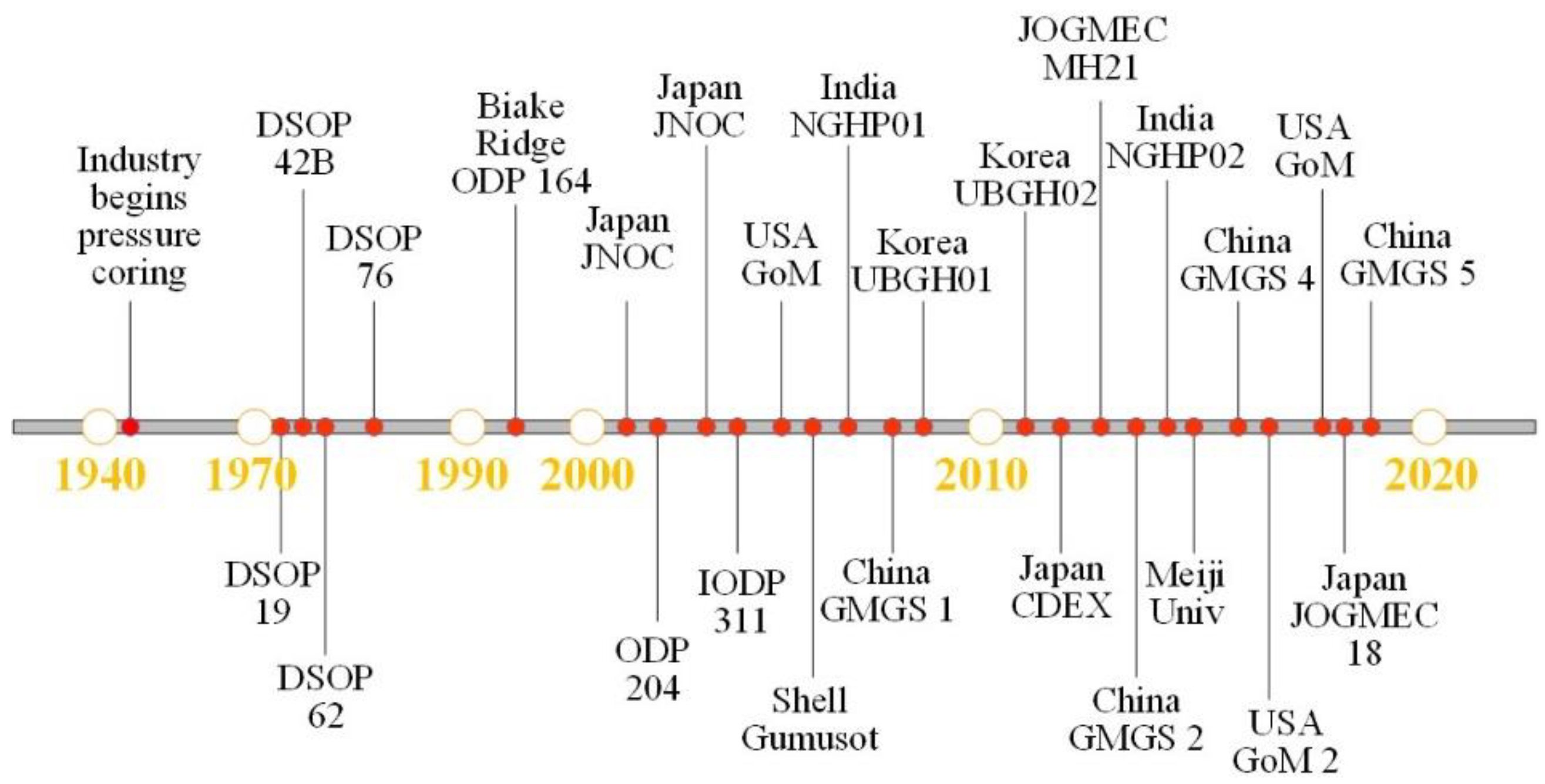

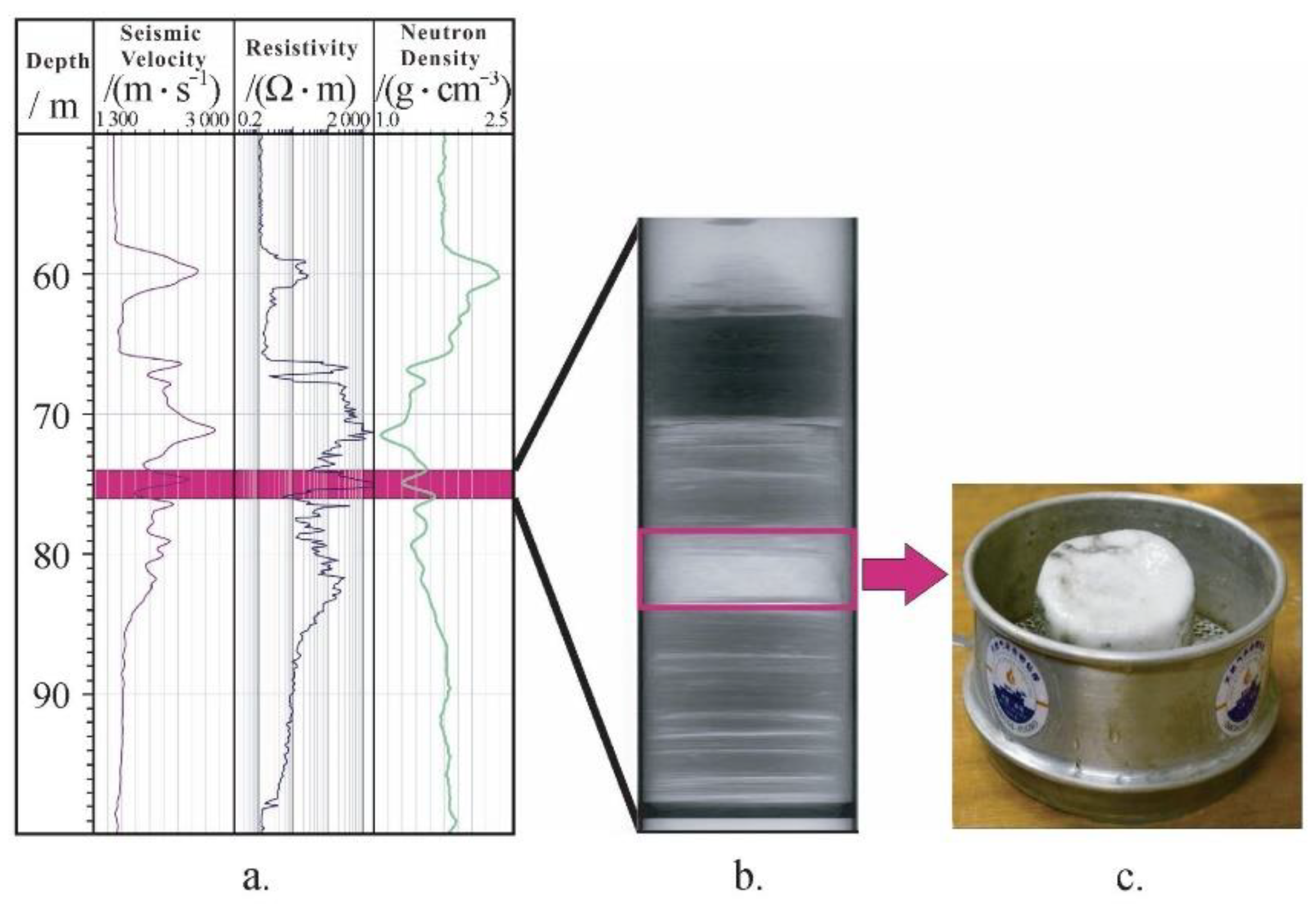
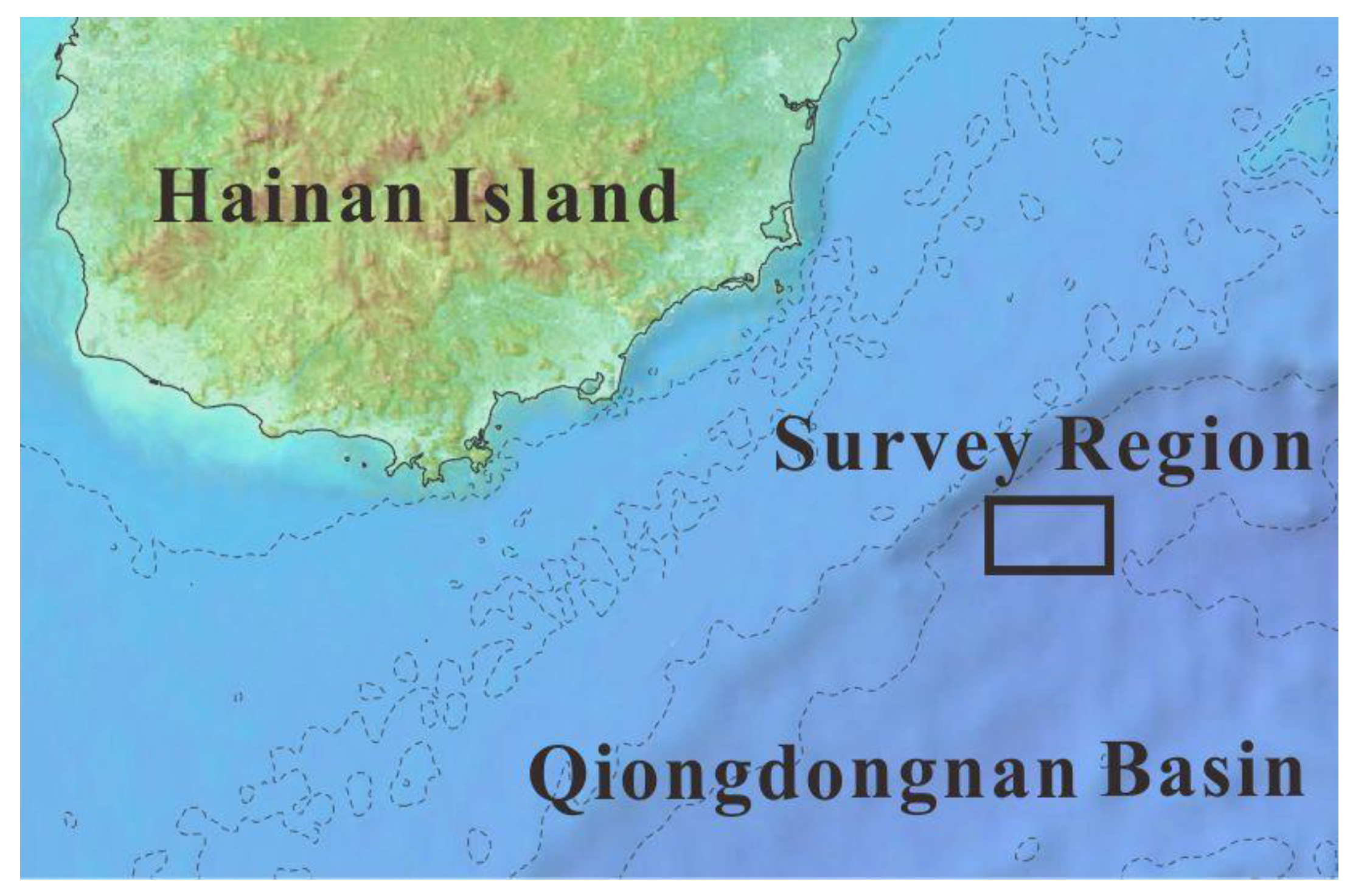
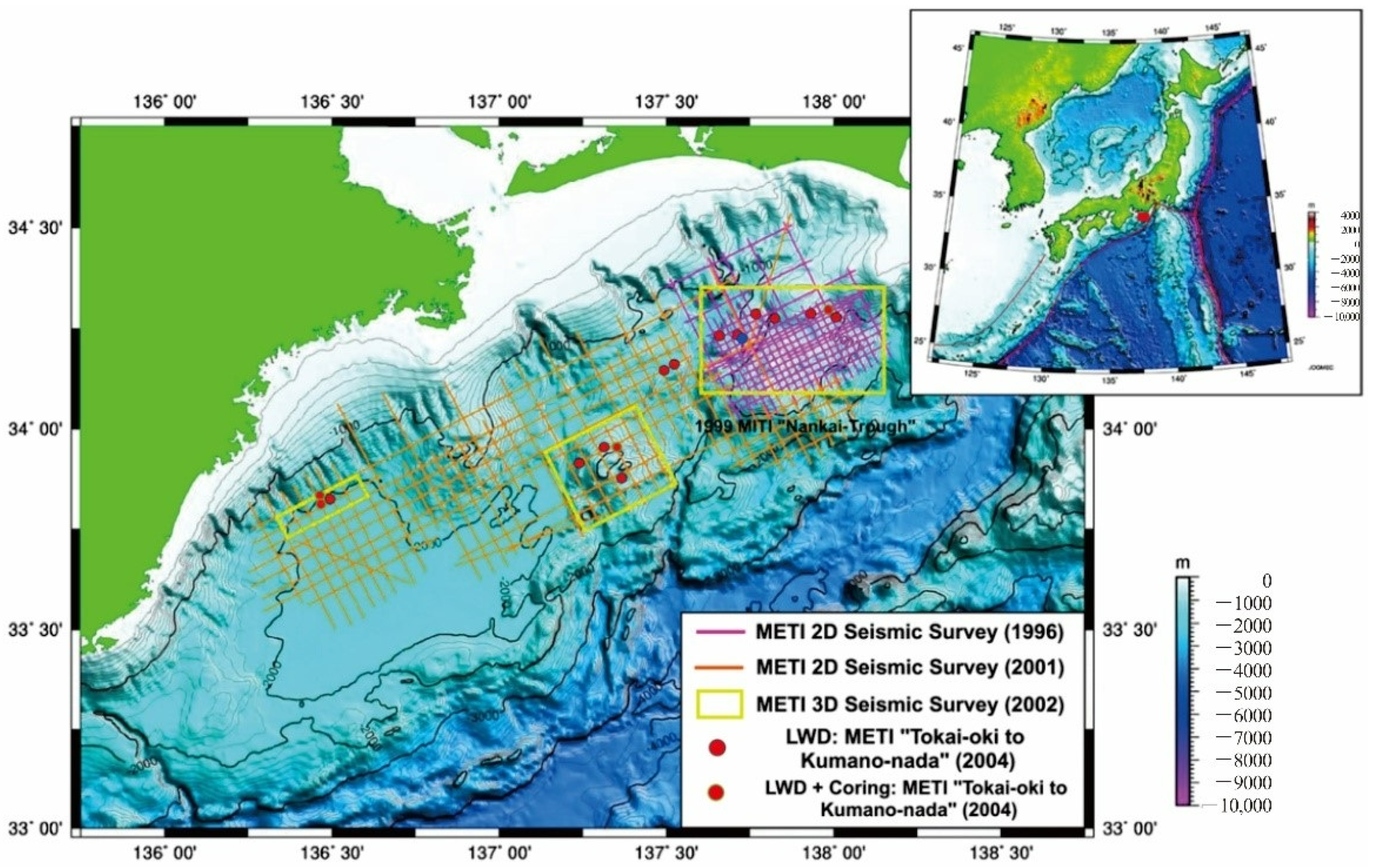

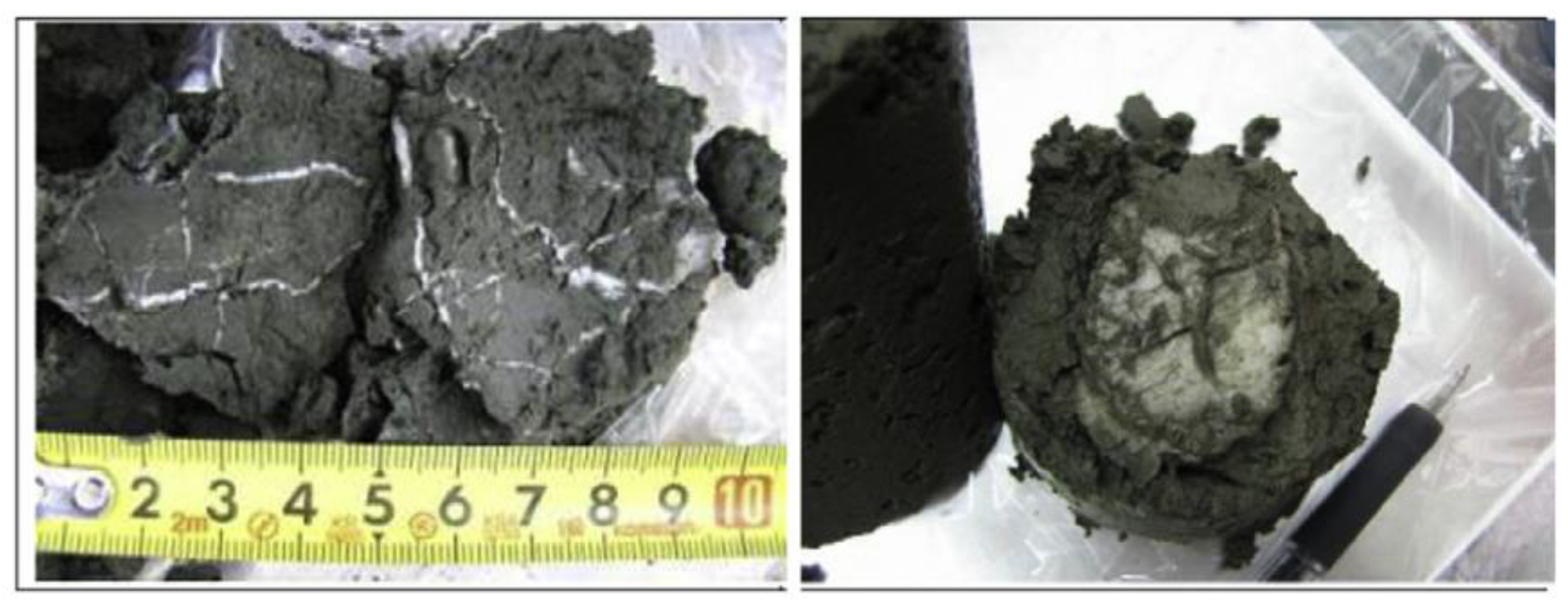
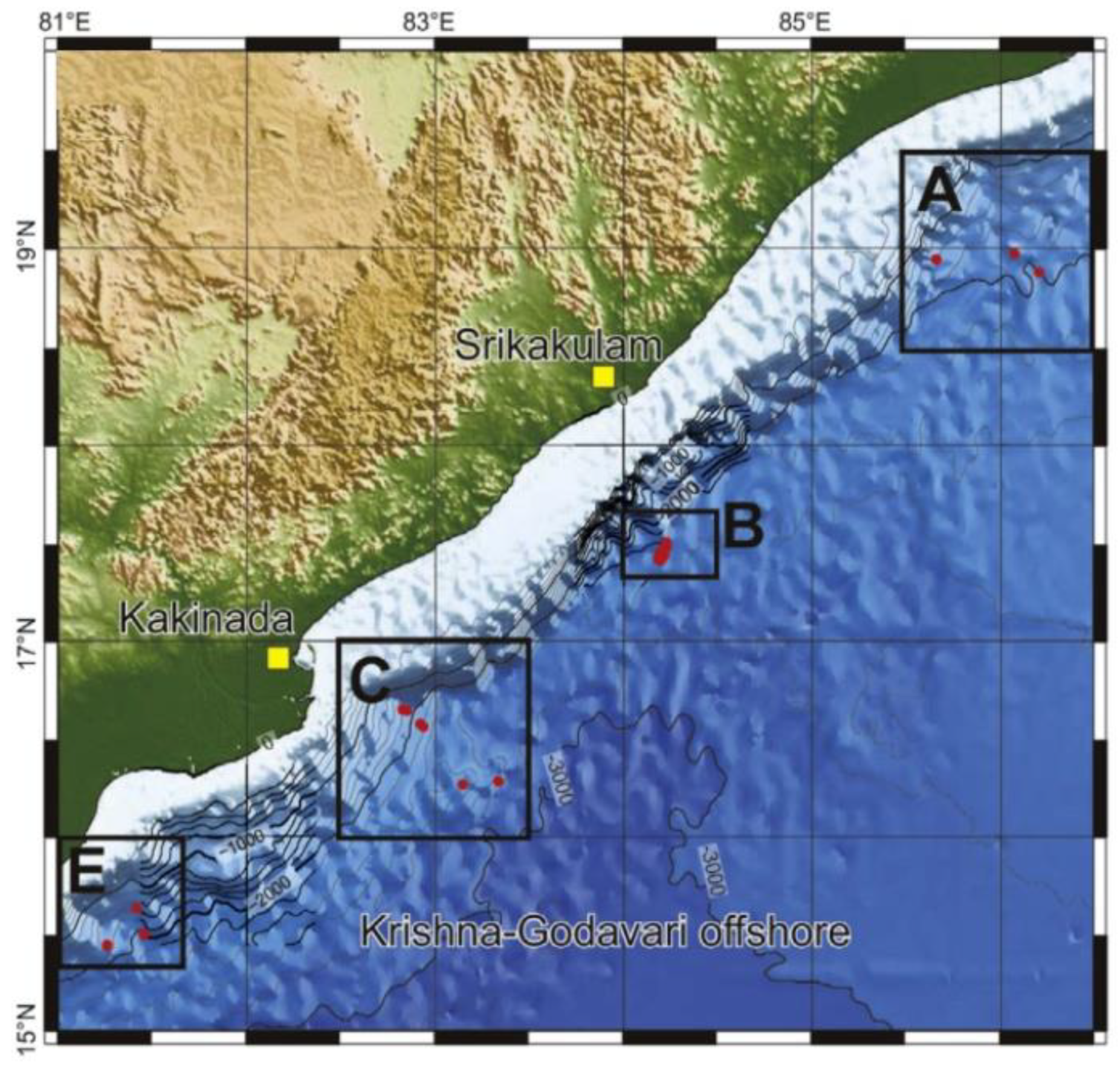
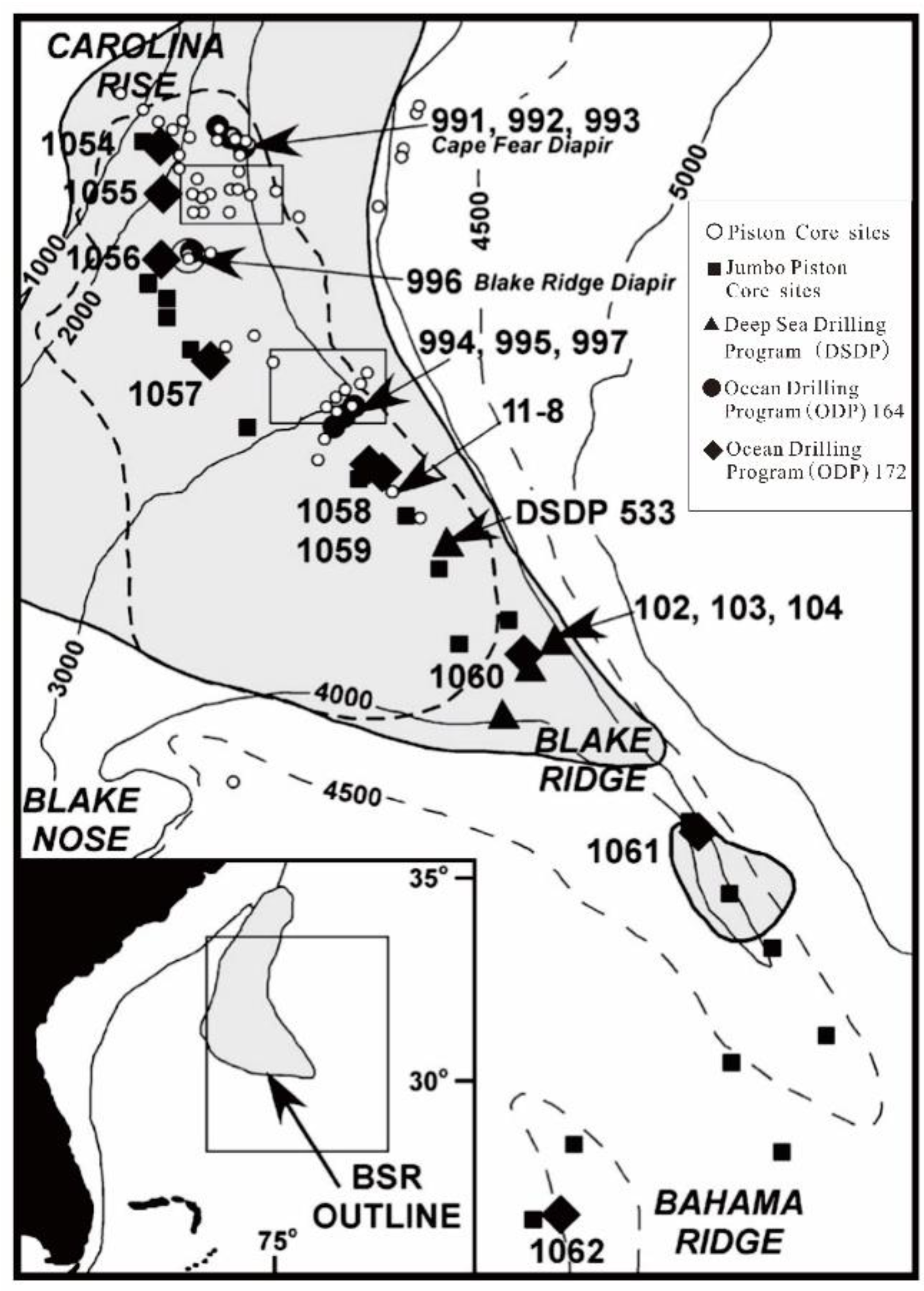
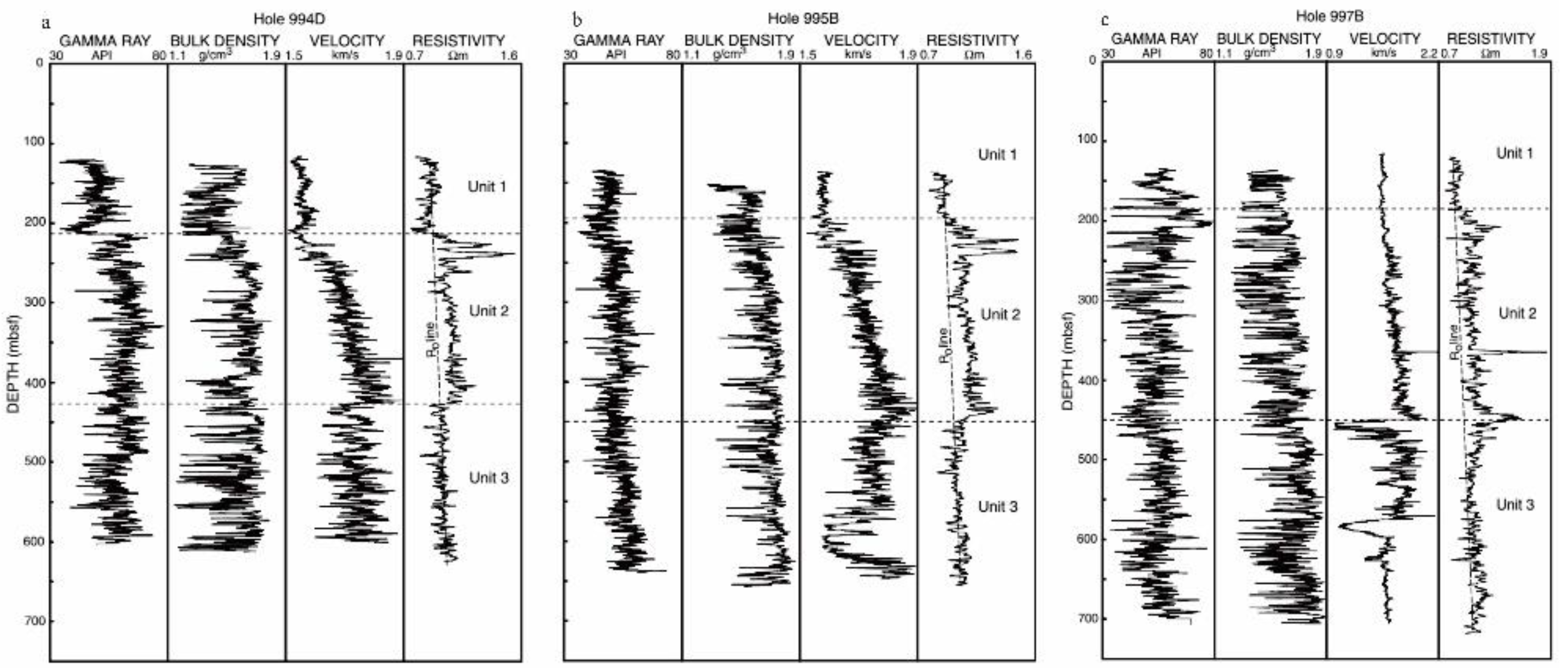
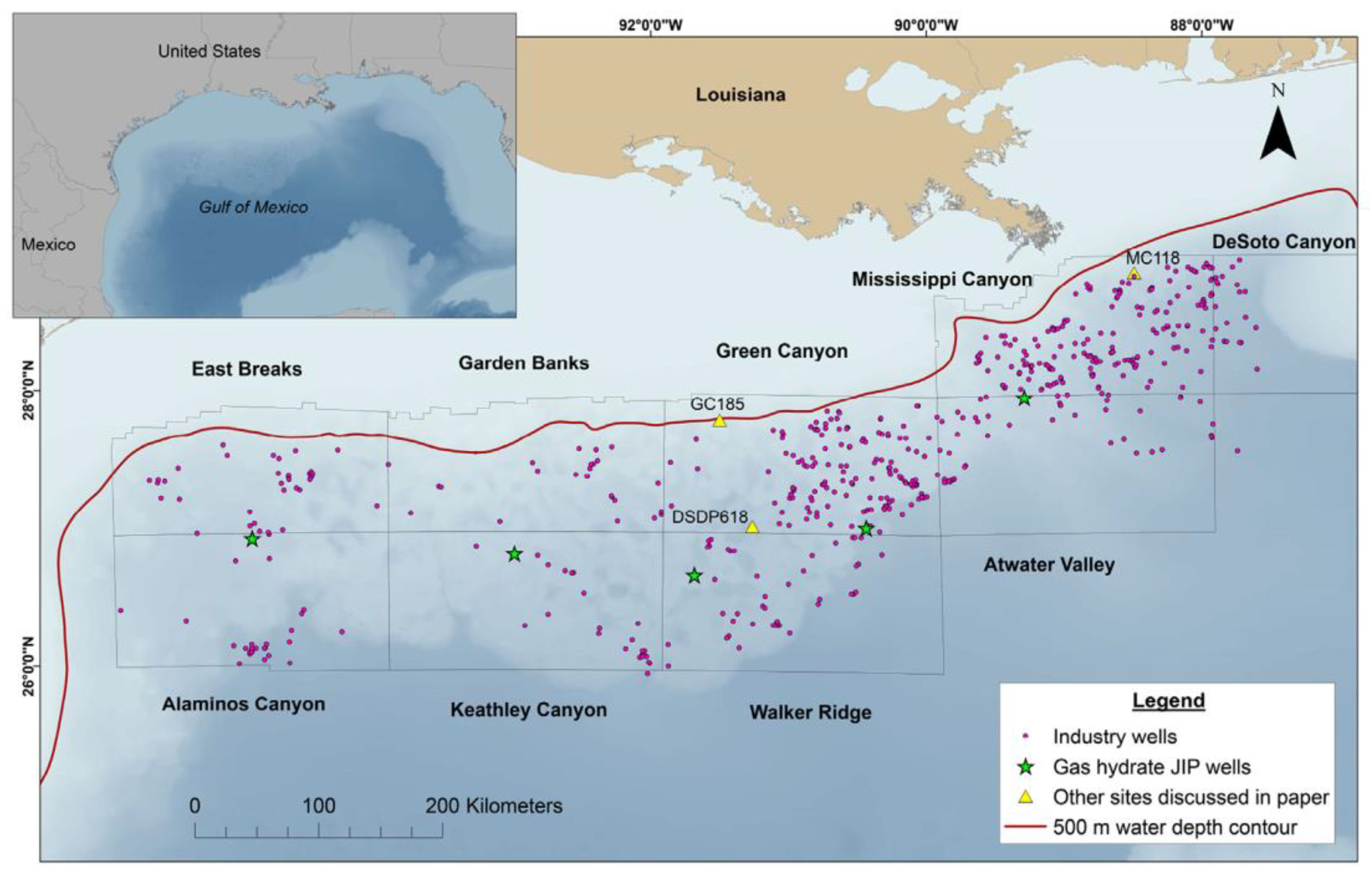
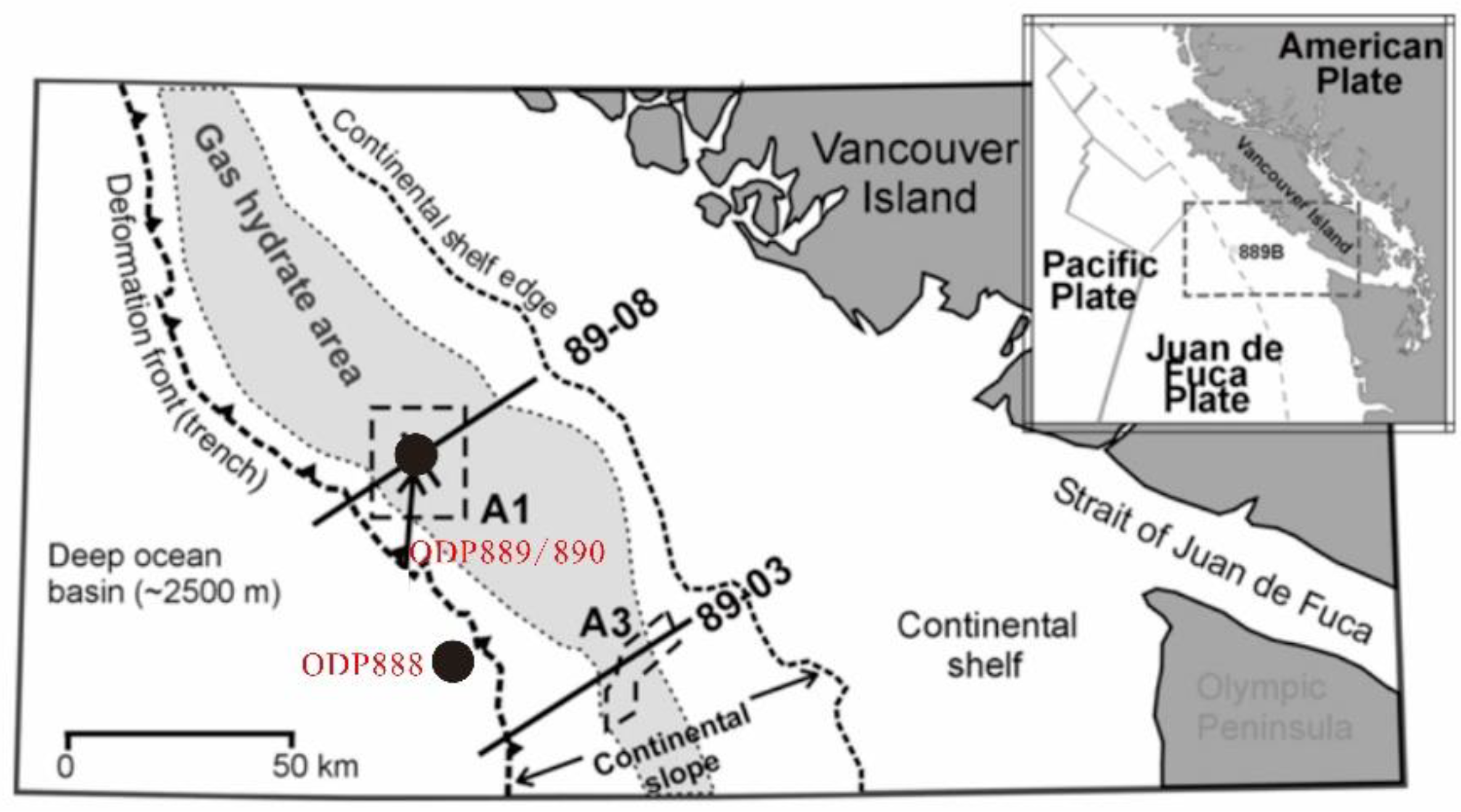
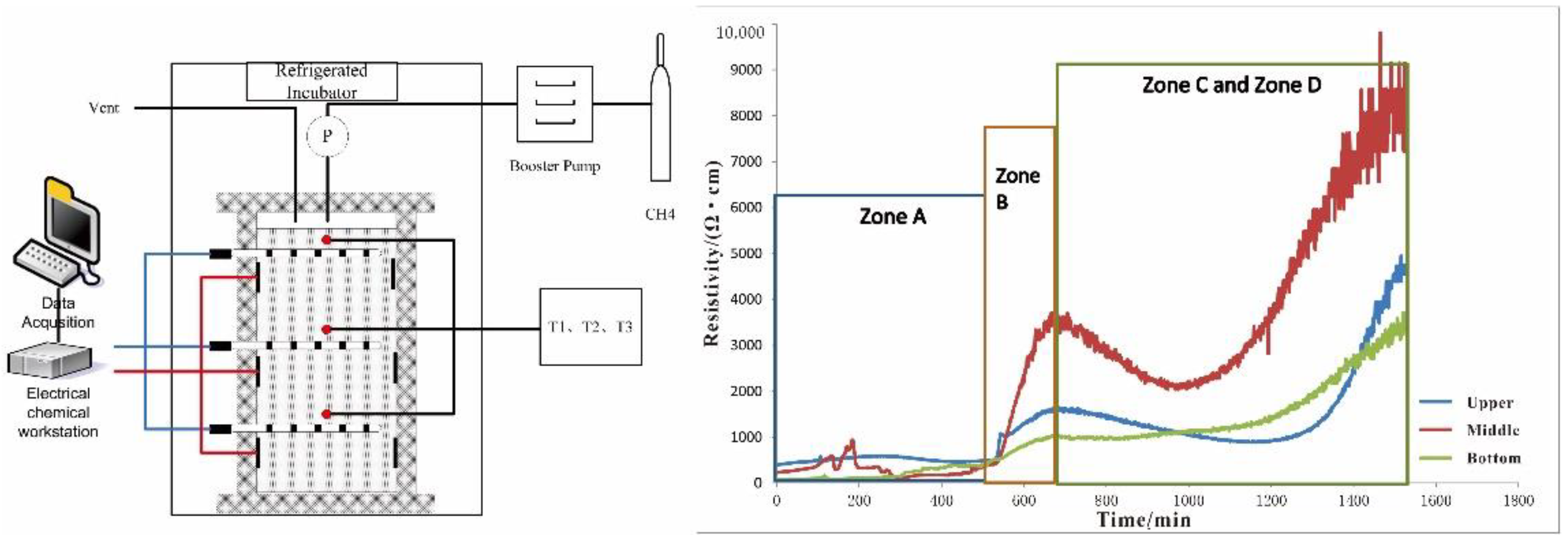
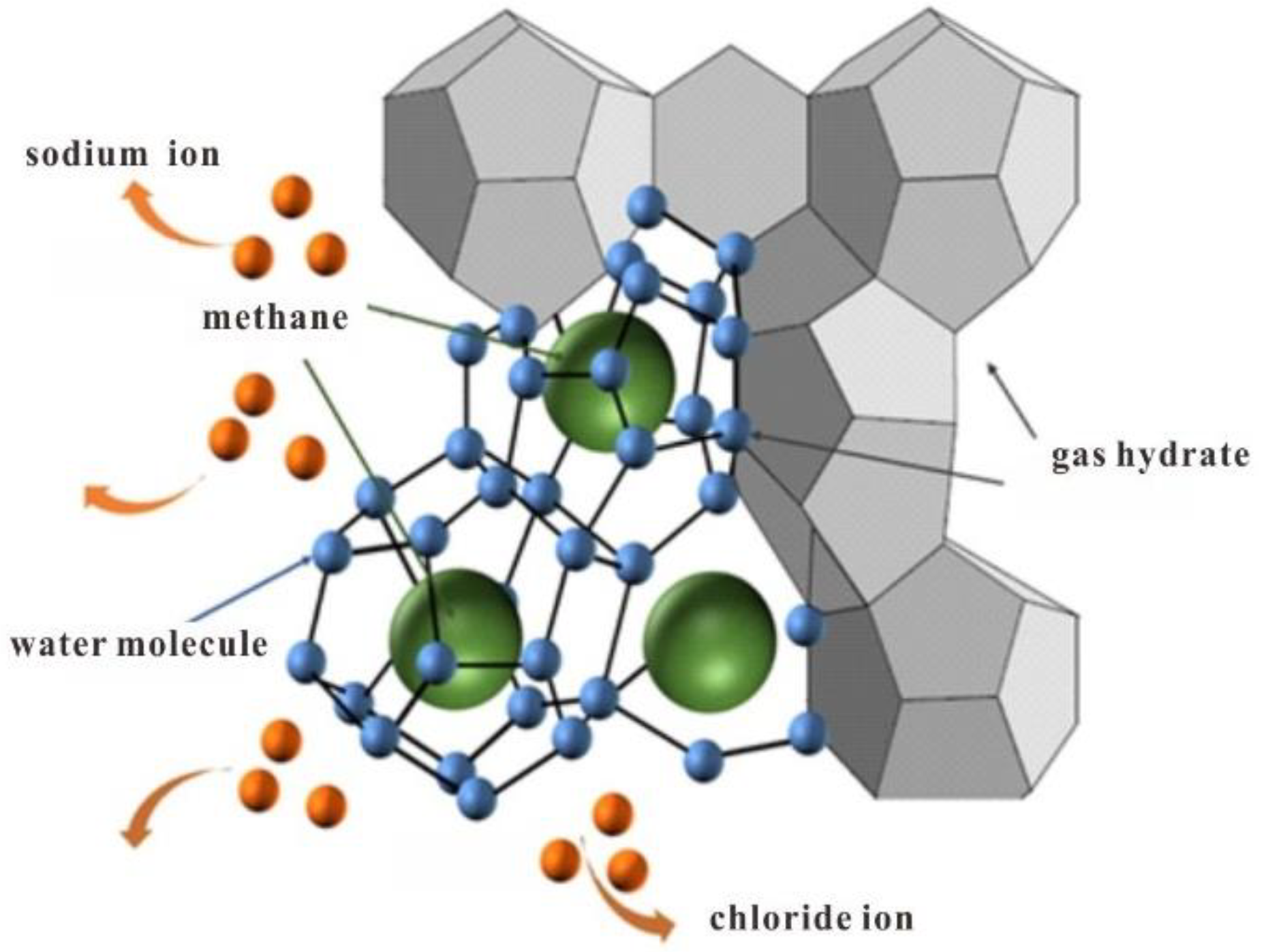


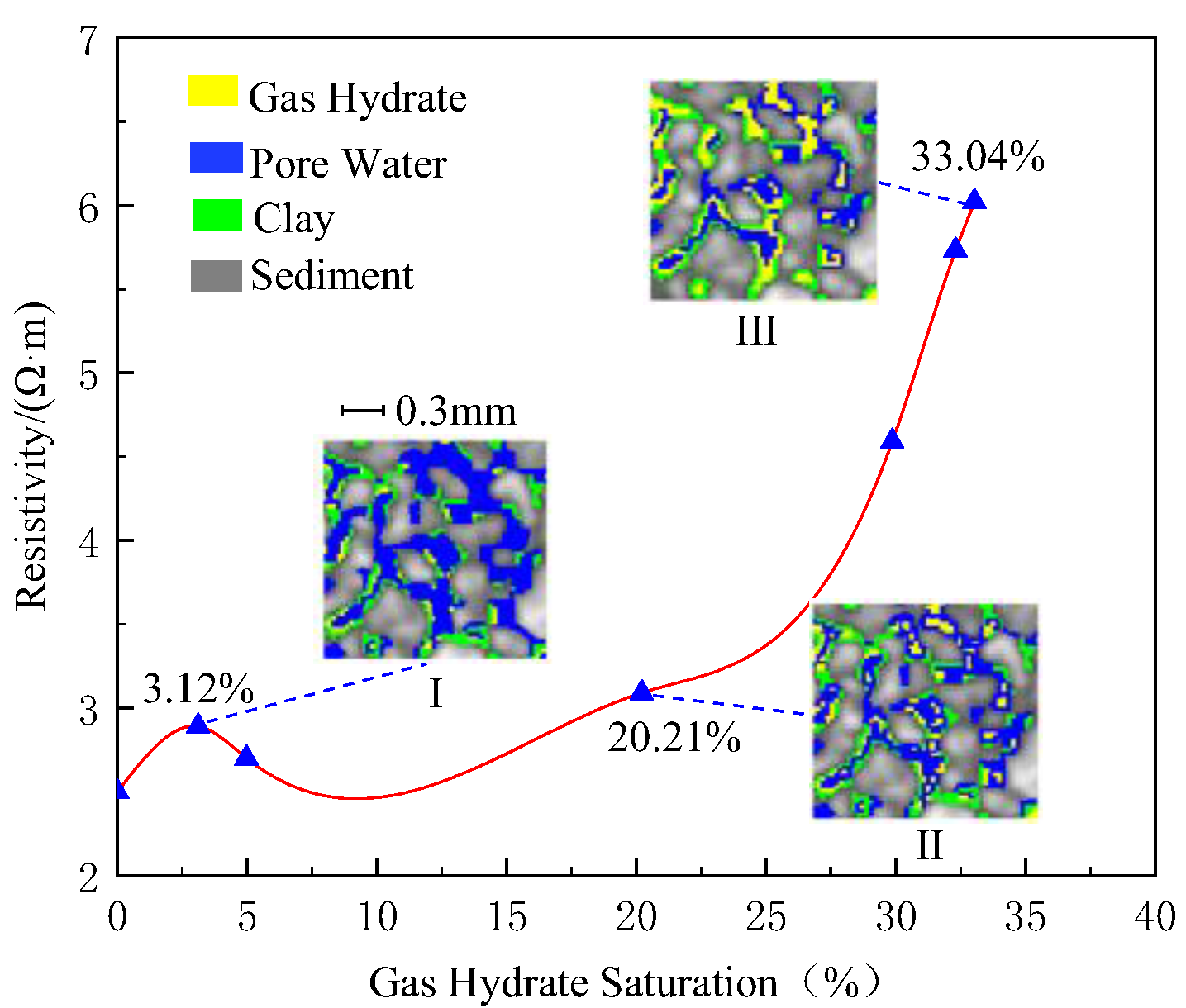

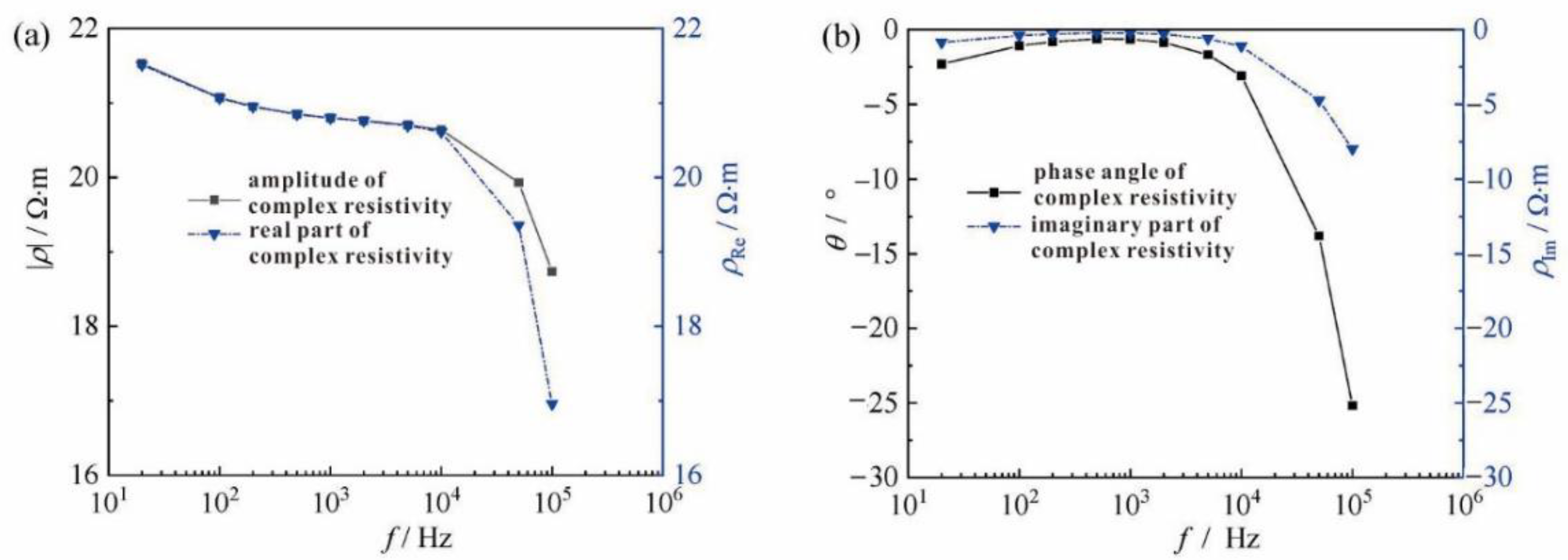
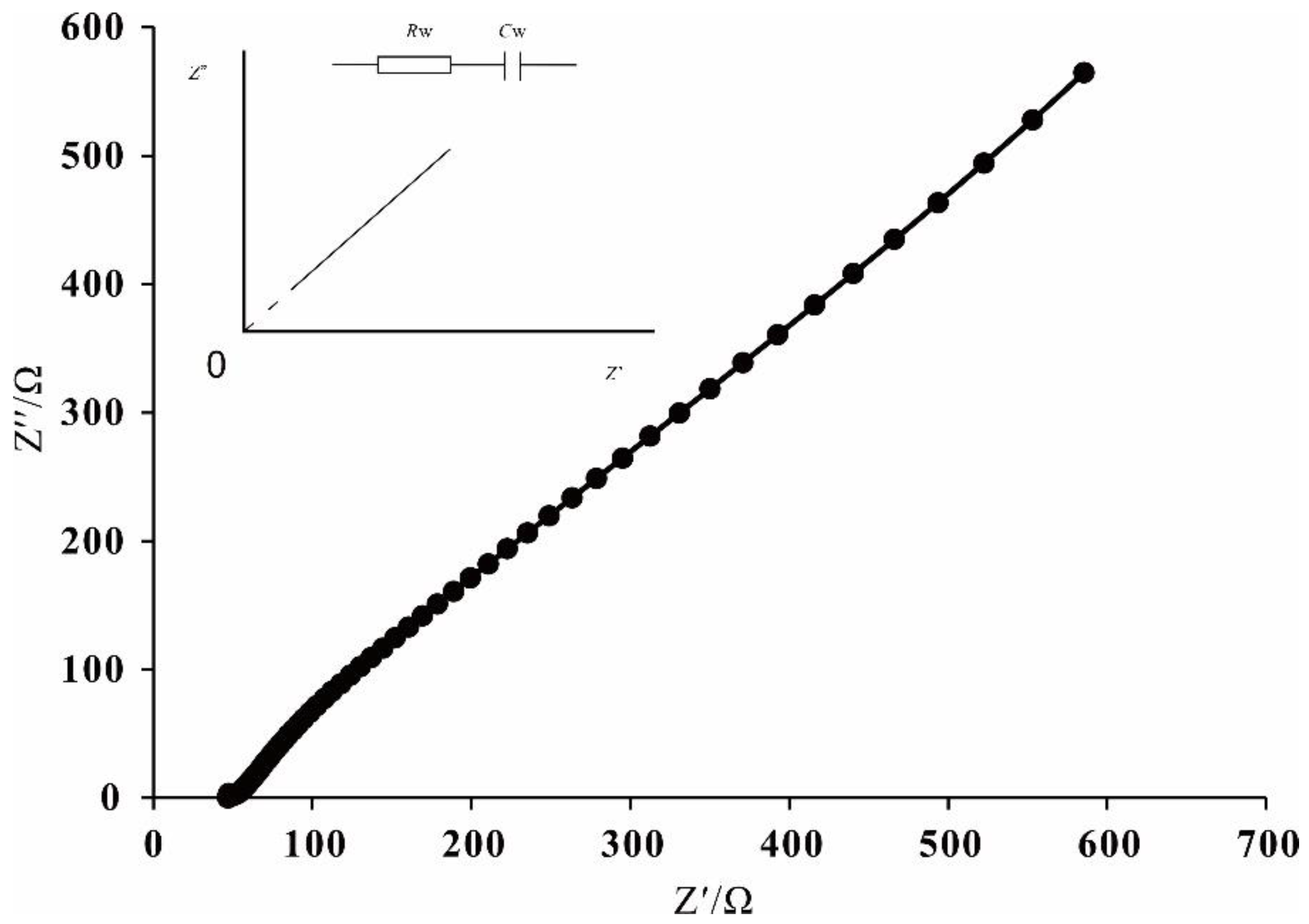
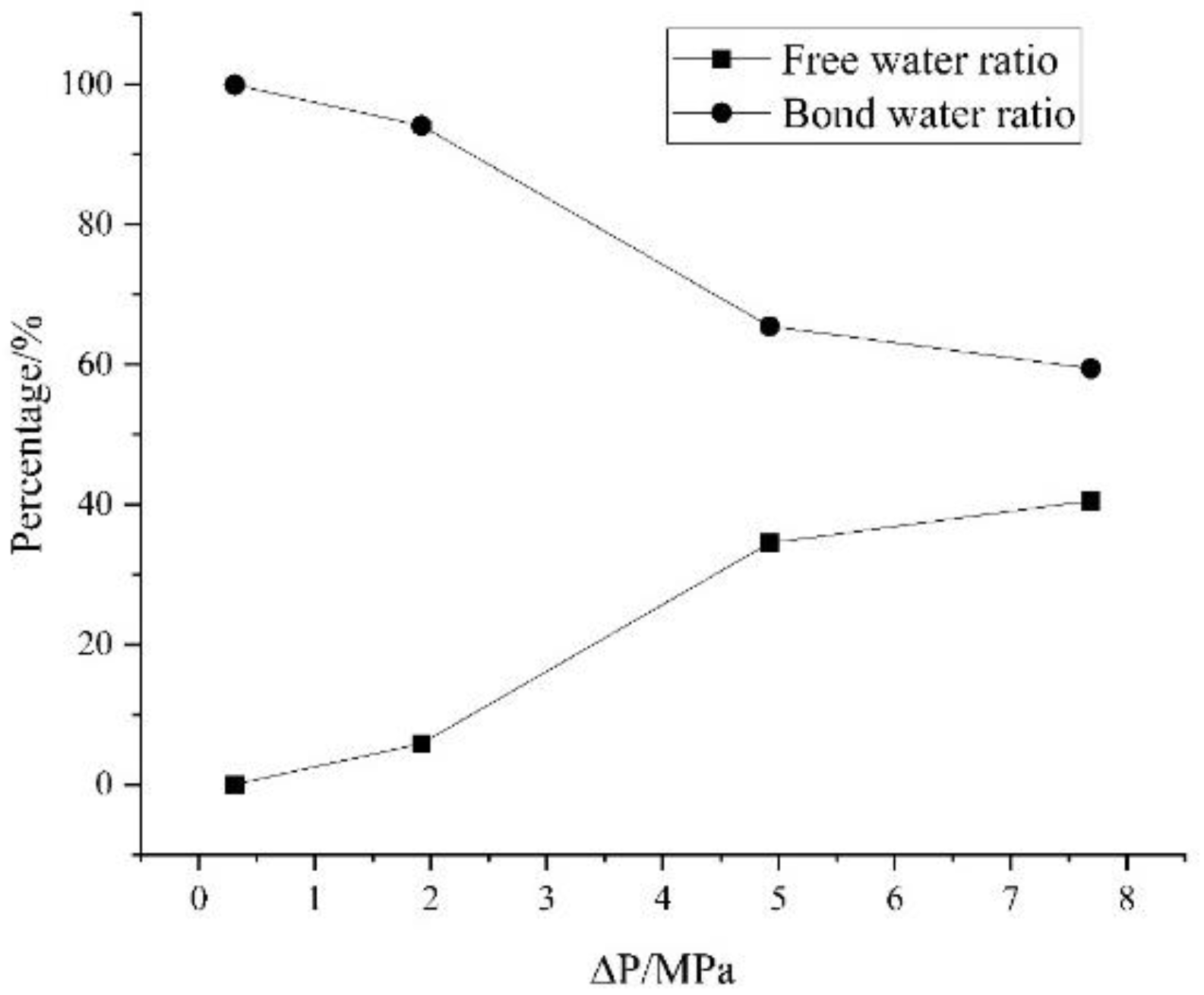
Publisher’s Note: MDPI stays neutral with regard to jurisdictional claims in published maps and institutional affiliations. |
© 2022 by the authors. Licensee MDPI, Basel, Switzerland. This article is an open access article distributed under the terms and conditions of the Creative Commons Attribution (CC BY) license (https://creativecommons.org/licenses/by/4.0/).
Share and Cite
Chen, Q.; Wu, N.; Liu, C.; Zou, C.; Liu, Y.; Sun, J.; Li, Y.; Hu, G. Research Progress on Global Marine Gas Hydrate Resistivity Logging and Electrical Property Experiments. J. Mar. Sci. Eng. 2022, 10, 645. https://doi.org/10.3390/jmse10050645
Chen Q, Wu N, Liu C, Zou C, Liu Y, Sun J, Li Y, Hu G. Research Progress on Global Marine Gas Hydrate Resistivity Logging and Electrical Property Experiments. Journal of Marine Science and Engineering. 2022; 10(5):645. https://doi.org/10.3390/jmse10050645
Chicago/Turabian StyleChen, Qiang, Nengyou Wu, Changling Liu, Changchun Zou, Yang Liu, Jianye Sun, Yanlong Li, and Gaowei Hu. 2022. "Research Progress on Global Marine Gas Hydrate Resistivity Logging and Electrical Property Experiments" Journal of Marine Science and Engineering 10, no. 5: 645. https://doi.org/10.3390/jmse10050645
APA StyleChen, Q., Wu, N., Liu, C., Zou, C., Liu, Y., Sun, J., Li, Y., & Hu, G. (2022). Research Progress on Global Marine Gas Hydrate Resistivity Logging and Electrical Property Experiments. Journal of Marine Science and Engineering, 10(5), 645. https://doi.org/10.3390/jmse10050645






